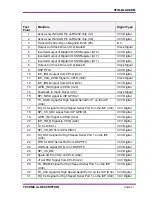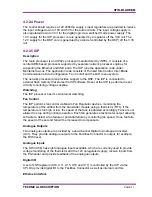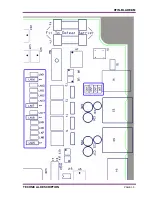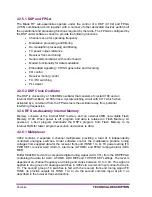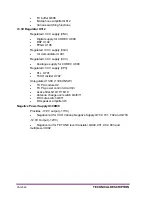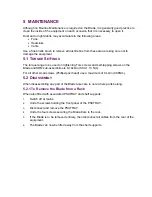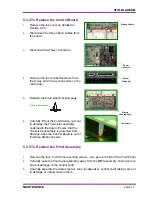
PAGE 38
TECHNICAL DESCRIPTION
The RF front-end amplifier stage comprises a low-noise transistor amplifier (Q400), which
is compensated to maintain good linearity across the required frequency bands and
temperature range. This provides excellent intermodulation and blocking performance
across the full operating range. The gain of this stage is typically 17dB for both UHF and
VHF versions.
4.3.2.2 First Mixer and IF Section
The output of the last front-end bandpass filter is coupled into single balanced mixer
T400/D413 which converts the RF signal to an IF frequency of 45MHz.
The local oscillator injection level is typ8dBm at T400 pin 1 with low side injection
used for UHF and high side for VHF. Following the mixer is IF amplifier Q401 which
provides approximately 15dB of gain and in association with its output circuitry presents
the required load conditions to the 4 pole 45MHz crystal filter Z401/402.
4.3.2.3 Quadrature Demodulator
Additional IF gain of approximately 30dB occurs at U401, which is a dedicated IF AGC
amplifier/Quadrature, Demodulator configured for single-ended input and output operation.
The AGC voltage for U401 is derived from the RSSI function of the DSP via AUX CTL and
multiplexer U902. The onset of AGC operation occurs when RF input signal levels at the
antenna exceeds -90dBm. Conversion of the 45MHz IF signal to I and Q baseband signals
is carried out by the demodulator section of U401. The 90MHz local oscillator signal is
generated by VCO Q402 which is phase locked by the auxiliary PLL output of U701 via
feedback signal AUX LO2.
4.3.2.4 Receiver Audio Processing
All receiver audio processing and filtering functions are performed by the CODEC U800
under the control of the DSP.
The receiver I and Q analogue baseband signals are converted to digital signals by the
CODEC ADC before being applied to a series of digital filters which provide the final stage
of adjacent channel filtering, high pass and low pass filtering and mute noise processing
for narrow and wideband operation. The processed signals are then converted to
analogue audio signals by the CODEC DAC and are applied to conventional audio
amplifiers U803A/B and the speaker amplifier U5.
The speaker circuits are not used in the Blade. The carrier and signalling mute functions
are performed by Q810/811/813 under DSP control with additional receiver muting to
U803B being applied by U103C when the mobile is in transmit mode.
Flat audio (20Hz – 5.8kHz) is provided to S1-6 via amplifier U803A. De-emphasis is
performed on the Control Board.
Software functions are used to filter off signals below 300Hz and above 3kHz.
4.3.3 Transmitter
Refer to Figure 3.6.
Summary of Contents for Xfin Blade
Page 10: ......
Page 22: ......
Page 35: ...XFIN BLADE SM TECHNICAL DESCRIPTION PAGE 35...
Page 50: ......
Page 58: ...PAGE 58 PRODUCT VARIANTS AND ACCESSORIES...
Page 64: ...PAGE 64 SPARES...
Page 72: ...PAGE 72 PROGRAMMER GUIDE...
Page 75: ...XFIN BLADE SM CONTROL CARD BLOCK DIAGRAM PAGE 75 B CONTROL CARD BLOCK DIAGRAM...
Page 76: ......




